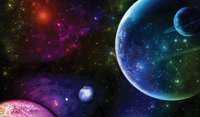Sky View
What shines in the dark is often hidden by clouds. Stellarium provides a clear view of the stars plus a lot of astronomical data.
|

©Passakorn Vejchayacha, 123rf.com
What shines in the dark is often hidden by clouds. Stellarium provides a clear view of the stars plus a lot of astronomical data.
A visit to a planetarium might be fascinating, but doesn't occur very often. The Stellarium software [1], however, provides a really interesting and convenient alternative. Moreover, Stellarium helps in observing the actual night sky. Because the software presents the sky photorealistically, nothing stands in the way of making it available in a classroom or during a lecture. And, because Stellarium is available in the repositories for all the major distributions, installation is at the click of a button.
Photorealism means that Stellarium presents the sky as observers experience it on the ground. The software is aware of current events and exhibits the sky from the perspective of different parts of the globe. At night, the sky is dark and the stars are resplendent; during the day the sky is bright and the sun bursts on the landscape. One important element is missing in Stellarium: clouds, rain, and fog – precisely those meteorological phenomena that send many Central European amateur astronomers on distant travels, such as to Namibia or Tenerife, for a clearer view.
After starting up, Stellarium adopts a southern view of the sky at the current time of the preset location. The software takes the time from your computer's clock, although you can set it to whatever you want. The same goes for the location, which is Paris by default. You can change the default to the location of your choice, for example, the Max Planck Institute for Astronomy, or your own garden. Help with settings is provided in the manual [2]. You can even change the settings to provide interesting views from the moon, Mars, or Saturn.
[...]
Pages: 4
Light pollution and cloud coverage often obscure views of the night sky and stars above. Enter Stellarium for the PC; this free, open source program can make even distant galaxies visible to the user.
Some pictures call for a particularly skillful photographer – either that or a computer with gPhoto2. The gPhoto tool helps you create sequential shots that won't try your patience.
Christmas is a time for rest and contemplation. To intersperse the period with some distraction on long winter evenings, a number of Linux games can prove some diversion, as this article will show.
© 2026 Linux New Media USA, LLC – Legal Notice